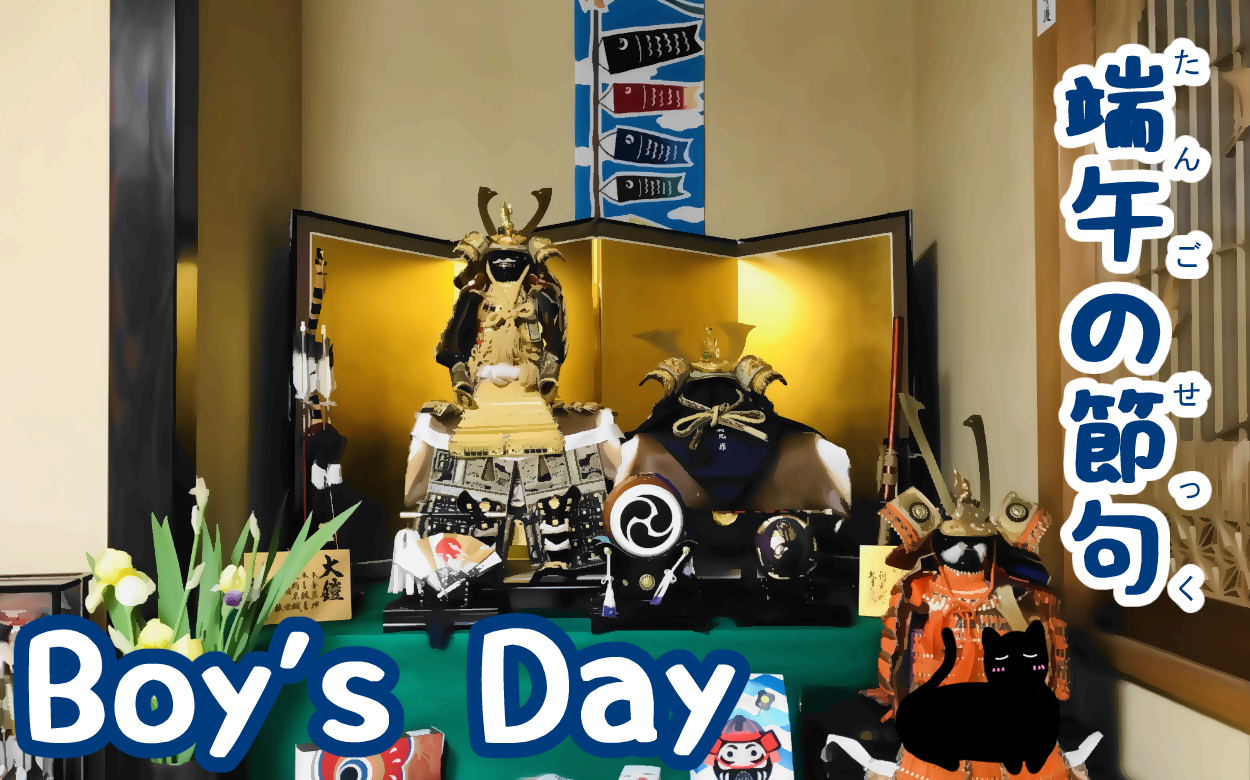Boy's Day / Tango no sekku
May 5th is the national holiday Children's Day, and is also the day for a traditional Japanese festival for boys called 端午の節句 (Tango no sekku, Boy's Day in English).
端午の節句 (Tango no sekku/Boy's Day) is an important day to celebrate a boy's healthy growth. Japanese people display samurai dolls in their houses and carp streamers outside. They also have some special foods.
The custom of Tango no sekku is derived from ancient China. In the ancient Chinese calendar, May is called 午 (go), which means the horse in the Chinese zodiac. Tango (端午) means the the first horse day of the horse month (May). Chinese people had the custom to pick herbs and drink liquor made from irises to purify themselves.
The custom was introduced to Japan in the Nara era (AC 710-794). Japanese people started to decorate iris leaves on the eaves of their roofs and also made headgear with the iris leaves to drive away evil spirits.
Samurai doll / Gogatsu Ningyou
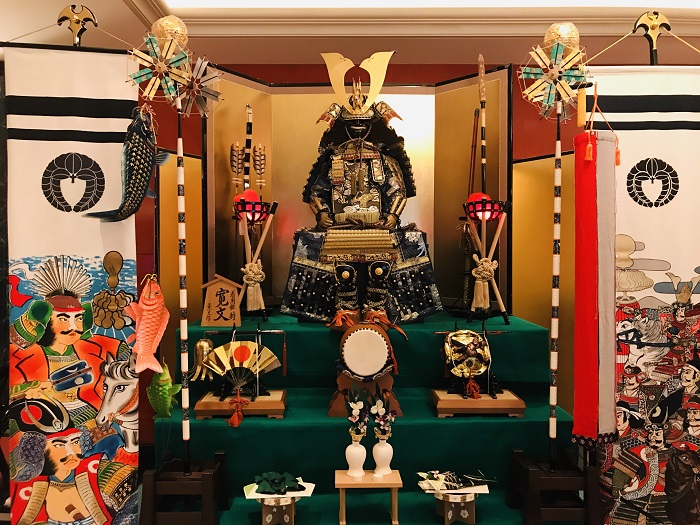
As Japanese society centered around samurai, the purpose of Tango no sekku was changed from just purification to also include boys' healthy growth and success in their lives. This is because the iris is called shoubu (菖蒲), which sounds the same as shoubu (尚武), meaning to encourage bushido (martial arts, which samurai follow in practice and mentality).
Japanese people made samurai dolls (五月人形/Gogatsu ningyou) to protect boys from bad luck, like diseases and accidents, instead of making iris leaf headgear.
Carp streamers / Koinobori
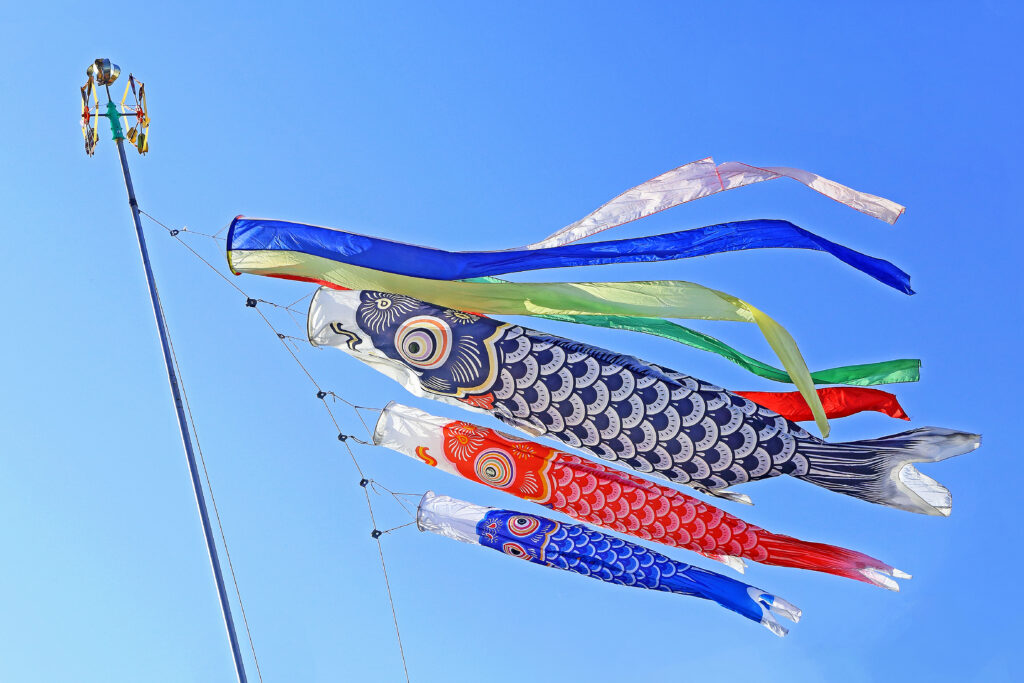
From the middle of April to Boy's Day, you can see many carp streamers that Japanese families fly outside their houses.
This originates from the flag samurais had, which is called hata sashimono (旗指物). Only samurai families were allowed to have this flag, so Japanese merchant families started to make carp streamers instead of hata sashimono.
Why is it a carp streamer?
Carp steamers originate from a Chinese legend of a carp climbing up a waterfall.
In China, there was a waterfall which is named dragon gate (竜門) in the upper part of the Yellow River. It flowed so fiercely, it was said that any fish who could climb up the waterfall can turn into a dragon.
Many fish tried to climb the waterfall, but no fish could make it. One day, a carp tried to climb the dragon gate waterfall and succeeded. He transformed into a dragon and went up into the sky.
The Chinese legend transferred to Japan and the carp became a symbol of success. Japanese families fly carp streamers to pray for the success for their boys.
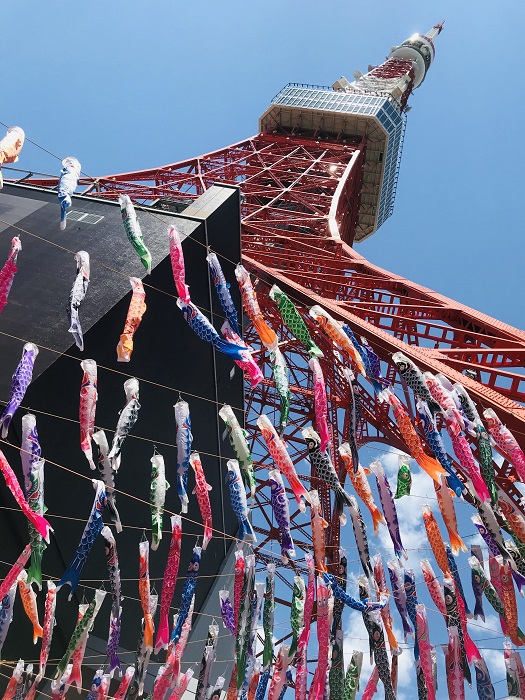
You can enjoy some events to see carp streamers in Japan. Tokyo Tower holds an event with carp streamers from April to May.
Let's go and enjoy Japanese culture if you have a chance go to Tokyo!
Bathing with iris leaves / Shoubu-yu

On Boy's Day, Japanese also have a custom which is called 菖蒲湯 (shoubu-yu), bathing with shoubu (iris) leaves in a bathtub to dispel bad luck. It is said that the shape of leaf looks like a Japanese sword, and Japanese people thought it is a good-luck talisman.
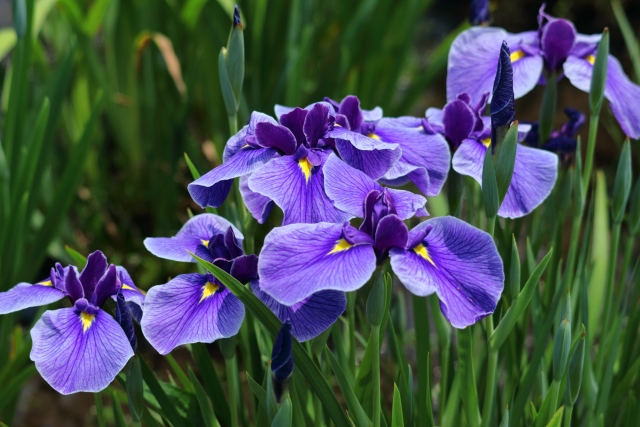
Iris (Shoubu/菖蒲) has a clean, herbal scent, so it is thought to have a power to purify people and drive away evil spirits.
Mochi wrapped in an oak leaf and steamed rice wrapped in bamboo leaves
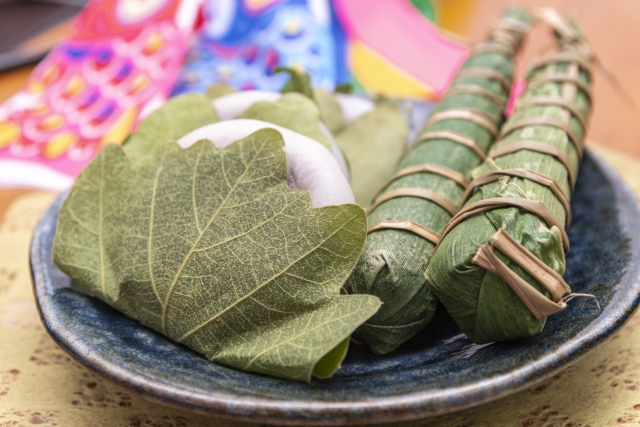
Special foods for Boy's Day are mochi wrapped in an oak leaf (柏餅/Kashiwa-mochi) and steamed rice wrapped in bamboo leaves (ちまき/Chimaki).
The custom to eat kashiwa-mochi started in the Edo era. The oak tree is a symbol of good luck for family because old oak leaves don't fall until new leaves come.
They are really good!
Samurai spirit in Boy's Day
Carp streamers and samurai dolls are displayed as familial love from parents to children.
Although there are no samurais any more in Japan, the samurai spirit might be passed down from Japanese ancestors to modern people.

